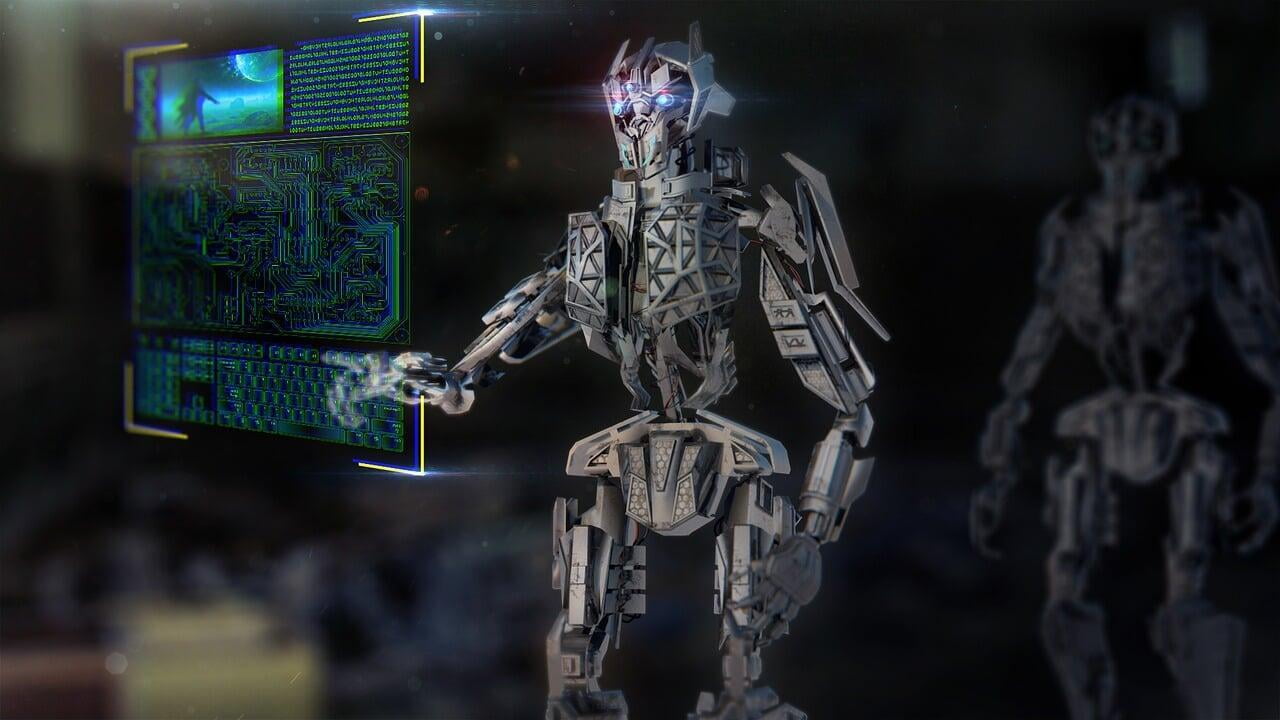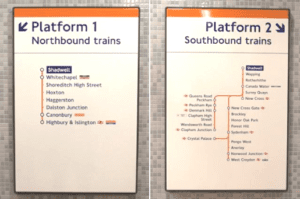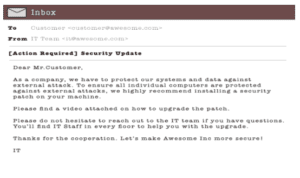Reading time: ~ 4 min.

A better journey (and experience) for the customers
This post looks at how something we should call “selfless service” makes the customer journey – in this case, literally – so much easier to deliver a better customer experience.
For example in the London Underground you can surprisingly reach your destination without getting lost and better without asking anyone even though you were in a foreign country where you've never been.
Why did London underground make you feel so comfortable, especially if you were without the internet on your phone because being so far underground blocks the mobile signal?
Simple. London Underground put your needs above their own (although one could argue that it also serves their needs if you use and reuse the tube because of this). They put their customers’ needs above their own.
They did what you can define: Selfless Service.
What did they do?
Well, it’s pretty simple. All they did was help you in the right place at the right time. For example, whenever you had to make a left or a right, there would be signposts guiding you in the right direction.

And the best part is, they only gave you the information that you needed. They didn’t stick the entire map in front of your eyes and say: “Go figure.” Also, they predicted the information you would need and made it available.
They also helped while on the tube train, because London Underground consists of different tube lines, you might need to change trains, at lines, at certain stations. To help, there’s this really useful map stuck inside each train to help passengers switch trains with ease.
Then, if this wasn’t enough, they even helped you make choices before you boarded the tube train. How awesome is that!

But what about it self service?
Self-service is great but let’s pause to think what self-service really means to the customer.By asking our customers to self-serve, we’re asking them to stop what they’re doing, go to a particular place, and to help themselves.
We’re interrupting our customers’ routine.
If the London Underground had its own form of self-service (rather than the carefully planned out signage), You would’ve had to pause at every juncture to use a help kiosk before moving on. Can you imagine the experience? Being constantly interrupted in achieving my end goal — transportation from A to B.
Following the tube experience, you can now look at traditional IT self-service as a selfish approach to customer service.
It often focuses on the organization’s goal rather than the customer. The different key-points:✔️Self-service is about “How can I help my customer when they need me?” ✔️Selfless service is about “How can I ensure that my customer will never need me?”
Looking at dictionary to find out the definition of the word selfless you can find this is an adjective used concerning more with the needs and wishes of others that with one’s own; a real synonym meaning of unselfish and altruist. It’s not about you (or your organization), it’s about the customer. It’s always about the customer.
Why should your organization be selfless?
Self-service is great but let’s pause to think what self-service really means to the customer.By asking our customers to self-serve, we’re asking them to stop what they’re doing, go to a particular place, and to help themselves.
We’re interrupting our customers’ routine.
If the London Underground had its own form of self-service (rather than the carefully planned out signage), You would’ve had to pause at every juncture to use a help kiosk before moving on. Can you imagine the experience? Being constantly interrupted in achieving my end goal — transportation from A to B.
Following the tube experience, you can now look at traditional IT self-service as a selfish approach to customer service.
It often focuses on the organization’s goal rather than the customer. The different key-points:
✔️Self-service is about “How can I help my customer when they need me?”
✔️Selfless service is about “How can I ensure that my customer will never need me?”
Looking at dictionary to find out the definition of the word selfless you can find this is an adjective used concerning more with the needs and wishes of others that with one’s own; a real synonym meaning of unselfish and altruist. It’s not about you (or your organization), it’s about the customer. It’s always about the customer.
Why should your organization be selfless?
A good customer experience can become a lead generation source
Customers are your most effective marketers. If you treat them well, they can get you more qualified leads than the best marketing wizard on the team.
If we consistently make our customers feel good (and consistently is key here), they’ll automatically start recommending us to their friends. It’s a simple concept.
And at the very basic of human levels, we believe that anyone would recommend anything if they think it’s going to make them look good.
What ITMS pros need to do now?
We need to adopt a simple mindset change to provide great customer service to end users/customers. In a selfless world, customers’ needs are put above the organization’s needs. And we approach customer service from the customers’ perspective.
We stop asking “How many tickets have I resolved” and start asking “How many customers have I made happy today?”
We stop asking “How do I set up a knowledge base?” and start asking “How do I get information to the customer in a way they understand?”
We stop asking “How do I build a ticket form?” and start asking “How do I design an experience for my customer to get me the information I need?”
And, importantly, we stop making customers come to us and we start going to them.
We can think to perform three things to immediately start doing Selfless Service practices in our own organization:
✔️Design a usable self-service portal, beginning from adapt the text in our self-service portal.✔️Map a user journey for our customers, identifying the places where they need to make choices in an easy way for them e.g. How much impact does this issue have for your business? And now, how soon should this issue be resolved?
We need to adopt a simple mindset change to provide great customer service to end users/customers. In a selfless world, customers’ needs are put above the organization’s needs. And we approach customer service from the customers’ perspective.
We stop asking “How many tickets have I resolved” and start asking “How many customers have I made happy today?”
We stop asking “How do I set up a knowledge base?” and start asking “How do I get information to the customer in a way they understand?”
We stop asking “How do I build a ticket form?” and start asking “How do I design an experience for my customer to get me the information I need?”
And, importantly, we stop making customers come to us and we start going to them.
We can think to perform three things to immediately start doing Selfless Service practices in our own organization:
✔️Design a usable self-service portal, beginning from adapt the text in our self-service portal.
✔️Map a user journey for our customers, identifying the places where they need to make choices in an easy way for them e.g. How much impact does this issue have for your business? And now, how soon should this issue be resolved?
✔️Review our email templates (manual or automated) like this.
✔️Review our email templates (manual or automated) like this.

Perhaps no IT team sends emails like this, but we get the point. All of our emails should be for our end users who are not as well versed with IT as we are so we have to cut the jargon and the IT terms and selflessly explain to them in simple language like this:

Ultimately, we need to stop thinking from our perspective. We need to start thinking from the customers perspective. We stop being selfish, and we start being selfless.
Original author: Sanjeev NC (May 29, 2018)
Quote: https://itsm.tools/2018/05/29/selfless-service%E2%80%8A-%E2%80%8Aa-new-mindset-to-customer-service/

